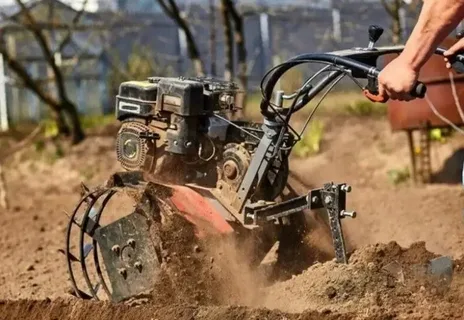Creating a productive garden starts with preparing the soil properly. For those new to gardening, using a garden tiller can feel intimidating—but it doesn’t have to be. This Beginner’s Guide to Using a Garden Tiller will walk you through everything you need to know, from choosing the right type of tiller to using it effectively and safely.
What Is a Garden Tiller?
A garden tiller is a powerful tool designed to break up hard soil, mix in compost or fertilizer, and create a loose, aerated soil bed for planting. It saves time and effort compared to manual digging, making it ideal for gardeners who want to prepare larger plots or improve soil quality more efficiently.
There are two main types of tillers:
- Front-tine tillers: Suitable for small to medium gardens and lighter soil.
- Rear-tine tillers: More powerful and better for tough or compacted soil.
Why You Should Use a Garden Tiller
Soil that’s compacted or filled with weeds can make it difficult for plants to grow. A tiller helps:
- Loosen the soil for better root growth.
- Mix in nutrients, compost, or fertilizer.
- Remove existing weeds and grass.
- Prepare the ground evenly for planting.
Using a tiller makes gardening more accessible for beginners and helps improve your chances of a successful harvest.
Preparing to Use a Tiller
Before you begin, follow these steps:
- Clear the area: Remove rocks, sticks, and large debris.
- Check the soil moisture: Soil should be slightly damp—not wet or dry—for best tilling results.
- Mark your plot: Outline where you want to till so you stay organized.
As a key part of this Beginner’s Guide to Using a Garden Tiller, preparation ensures safe and effective operation.
How to Use a Garden Tiller: Step-by-Step
- Start the tiller: Make sure you’re on level ground and follow the manufacturer’s instructions.
- Engage the blades: Allow the tiller to dig into the soil slowly; don’t force it forward.
- Work in rows: Move in straight lines to cover the area evenly.
- Make multiple passes if needed: For hard soil, start shallow and go deeper with each pass.
- Avoid over-tilling: Too much tilling can damage soil structure.
Using a garden tiller is a skill that improves with practice. Go slowly at first and focus on maintaining control.
Safety Tips for Beginners
- Wear sturdy shoes, gloves, and eye protection.
- Never place hands near the tines when the machine is running.
- Keep children and pets away from the tilling area.
- Turn off the engine before making any adjustments.
Your safety is essential, especially as a new gardener. Part of mastering the Beginner’s Guide to Using a Garden Tiller is learning how to use it responsibly.
After Tilling: What’s Next?
Once you’ve finished tilling:
- Rake the soil smooth.
- Add more compost if needed.
- Begin planting your seeds or transplants.
Regular tilling is not always necessary. Over time, you may shift to no-till gardening to preserve soil health.
Conclusion
This Beginner’s Guide to Using a Garden Tiller provides a solid foundation for new gardeners looking to improve their soil and grow healthy plants. By understanding the types of tillers, how to prepare your space, and how to operate the machine safely, you’ll be well on your way to a thriving garden.


